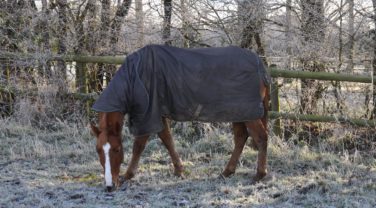Is Straw Suitable to Feed to Horses with EGUS?
Not all horses and ponies with gastric ulcers struggle to maintain weight. For good doers or overweight individuals turnout 24/7 on well covered pasture and/or ad-lib forage to help manage ulcers could result in further weight gain which brings its own potential health issues. Straw is a very low calorie fibre source as it contains lignin which is indigestible.
Fibrous Feeds are a Key Part of Managing Gastric Ulcers in Horses
Feeding straw in combination with other more nutritious fibre sources keeps the overall calorie intake low, whilst maximising the amount the horse has to eat. Encouraging continuous eating of fibrous feeds is a key part of the management of gastric ulcers.
A previous study by researchers in Denmark has however, found that horses fed straw as the sole or predominant forage source were 4.5 times more likely to have gastric ulcers as seen here . One of the potential reasons researchers gave for this link was that straw lacks significant levels of the nutrients protein and calcium which are thought to buffer acidity within the digestive tract.
In the UK, straw is rarely fed as the sole forage source to horses and recognising that straw can be useful as a low-calorie forage source for good doers, a follow up study has been published investigating the safety of feeding 50% wheat straw. The study was relatively small using 6 horses and was a crossover design for 2 x 3week periods of feeding. The research found no increased risk of ulcers from using 50% straw to replace haylage in the ration. 3 weeks is long enough for ulcers to develop and from anecdotal use of straw as a part of a ration over the long term, there is not currently any reason to suspect gastric ulcer issues are more likely to occur with the long-term use of straw, especially if it means more forage can be fed in total.
It was particularly encourage that the horses fed straw were also fed haylage. Although the pH (acidity) values of the haylage were not included in the study, it does appear from the other nutritional information provided, that true haylages were used rather than wrapped hays that have undergone little if any fermentation. Wrapped forages are often avoided for horses with ulcers, even those that probably contain the same level of acidity as normal hay because they are too dry to fermet. This study showed that the use of straw alongside a more acidic forage in the form of a haylage still didn’t increase the risk of ulcers in these horses.
The study also provided insights into other benefits of the use of straw. The rate of consumption was slower than when fed haylage alone which builds on findings of other studies but this study also showed that another benefit of this slower rate of intake was a lower plasma insulin response. Straw has a much lower water soluble carbohydrate (WSC) content than a grass forage so a lower insulin response would be expected but when the rate of intake was slowest in the evening, the researchers found no significant increase at all in insulin levels. This suggests that using low WSC forages and slowing the rate of intake are both important strategies in managing horses with insulin dysregulation (ID) or the potential to develop ID due to being overweight or obese.
Tips for Managing the Good Doer Horse with Ulcers:-
- Maximise fibre intake especially fibre in a format that encourages more chew time e.g long or short chop fibre sources in preference to pellets
- If restricting overall intake to manage weight, divide feed and forage into meals with no more than a 6 hour gap between them as research has found horses are more likely to have ulcers if they spend long periods with nothing to eat
- Try to slow the rate of eating with small meals, double netted forage or forage in different locations in the stable or paddock to encourage movement and natural foraging behaviour
- Allow access to hay or a small quantity of fibre feed that preferably includes alfalfa prior to riding for extra buffering potential
- Allow free access to water



